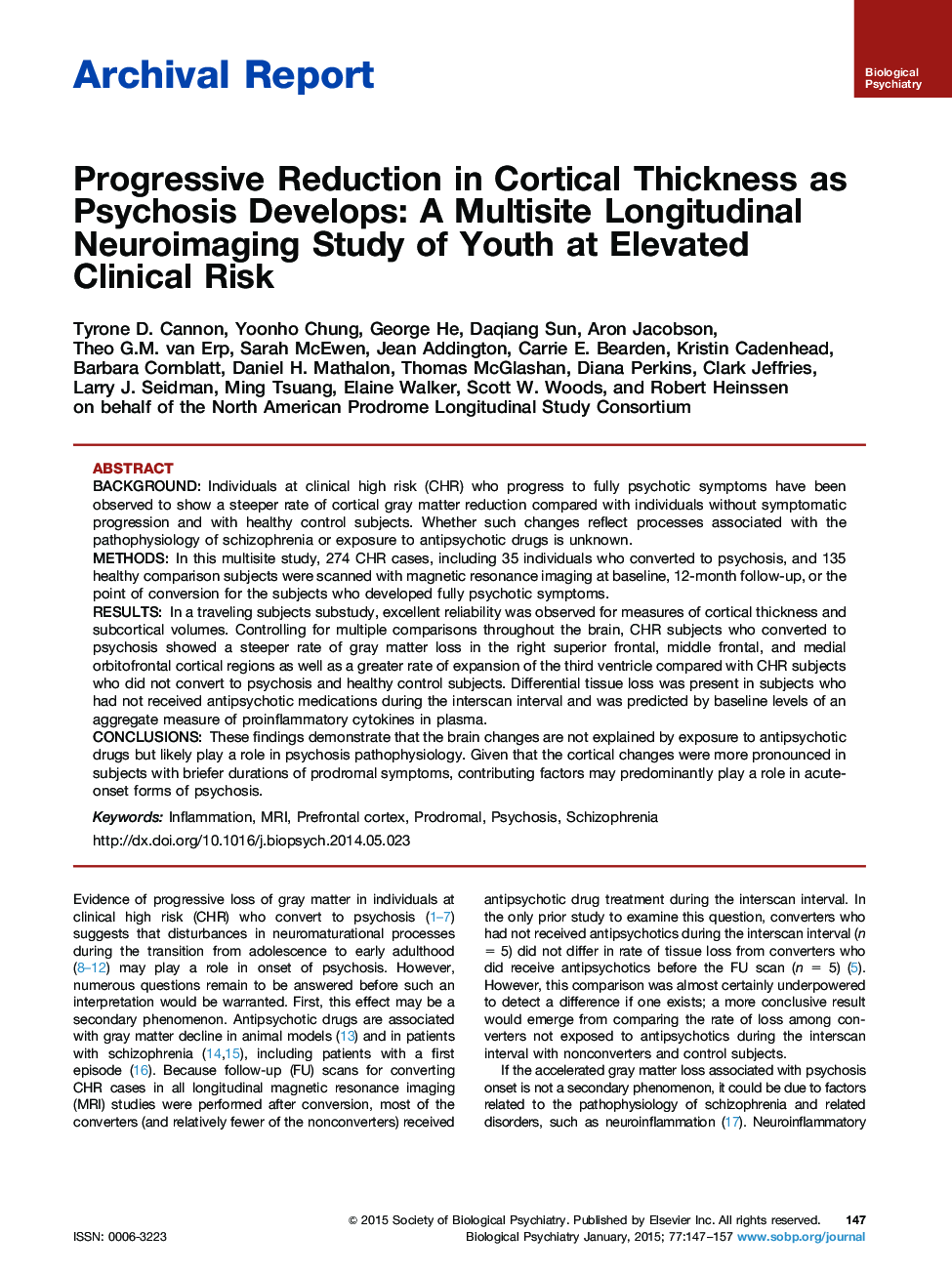| Article ID | Journal | Published Year | Pages | File Type |
|---|---|---|---|---|
| 6227040 | Biological Psychiatry | 2015 | 11 Pages |
BackgroundIndividuals at clinical high risk (CHR) who progress to fully psychotic symptoms have been observed to show a steeper rate of cortical gray matter reduction compared with individuals without symptomatic progression and with healthy control subjects. Whether such changes reflect processes associated with the pathophysiology of schizophrenia or exposure to antipsychotic drugs is unknown.MethodsIn this multisite study, 274 CHR cases, including 35 individuals who converted to psychosis, and 135 healthy comparison subjects were scanned with magnetic resonance imaging at baseline, 12-month follow-up, or the point of conversion for the subjects who developed fully psychotic symptoms.ResultsIn a traveling subjects substudy, excellent reliability was observed for measures of cortical thickness and subcortical volumes. Controlling for multiple comparisons throughout the brain, CHR subjects who converted to psychosis showed a steeper rate of gray matter loss in the right superior frontal, middle frontal, and medial orbitofrontal cortical regions as well as a greater rate of expansion of the third ventricle compared with CHR subjects who did not convert to psychosis and healthy control subjects. Differential tissue loss was present in subjects who had not received antipsychotic medications during the interscan interval and was predicted by baseline levels of an aggregate measure of proinflammatory cytokines in plasma.ConclusionsThese findings demonstrate that the brain changes are not explained by exposure to antipsychotic drugs but likely play a role in psychosis pathophysiology. Given that the cortical changes were more pronounced in subjects with briefer durations of prodromal symptoms, contributing factors may predominantly play a role in acute-onset forms of psychosis.
